The Opposite of Fate: Memories of a Writing Life Read online
Page 24
I wish you all interesting lives.
• required reading and other dangerous subjects •
Several years ago, I learned that I had passed a new literary milestone. I had been inducted into the Halls of Education, under the rubric “Multicultural Literature,” in many schools also known as “Required Reading.”
Thanks to this development, students now come up to me at book signings and proudly tell me they’re doing their essays, term papers, or master’s theses on me. By that I mean that they are analyzing not just my books but me, my private history and personal peccadilloes, which, with the hindsight of classroom literary investigation, prove to contain many Chinese omens that made it inevitable that I would become a writer.
When I was a student, the only writers I analyzed had long since passed on to that Great Remainder Table in the Sky. Those authors of bygone years could not protest what I said about them or their works. I could write, “What Henry James really meant . . .” and there was no Henry James to say, “You bloody fool, if that’s what I meant, then that’s what I would have said.”
I, however, have the distinct pleasure of hearing, while still alive, what I really meant when I wrote The Joy Luck Club. One student discovered that my book is structured according to the four movements of a sonata; the proof lay in the fact that my parents had wanted me to become a concert pianist, as mentioned in my bio on the book jacket. I learned through another student who culled in-depth biographical information from an authoritative source, People magazine, that my book was based on my numerous bad experiences with men. I showed that essay to my husband, Lou, who has been my constant companion since 1970.
As the recipient of such academic attention, I know I’m supposed to feel honored. But what I actually feel is something more akin to shock and embarrassment. It’s as though I’d eavesdropped on a party conversation and discovered that I am the subject of juicy gossip by a group of psychoanalysts—or perhaps proctologists, depending on how in-depth and obsessive the analysis has become.
On one occasion, I read a master’s thesis on feminist writings that included examples from The Joy Luck Club. The student noted that I had used the number four something on the order of thirty-two or thirty-six times—in any case, a number divisible by four. Accordingly, she pointed out that there were four mothers, four daughters, four sections of the book, four stories per section. Furthermore, there were four sides to a mah jong table, four directions of the wind, four players. More important, she postulated, my use of the number four symbolized the four stages of psychological development, which corresponded in uncanny ways to the four stages of some type of Buddhist philosophy I had never heard of. Extending this analysis further, the student recalled that there was a character called Fourth Wife, symbolizing death, and a four-year-old girl with a feisty spirit, symbolizing regeneration. There was a four-year-old boy who drowns, and perhaps because his parents were Baptists, he symbolized rebirth through death. There was also a little girl who receives a scar on her neck at the age of four, who then loses her mother and her sense of self; she symbolized crisis.
In short, the student’s literary sleuthing went on to reveal a mystical and rather byzantine puzzle, which, once explained, proved completely brilliant and precisely logical. She wrote me a letter and asked if her analysis had been correct. I was sorry I could not say yes.
The truth is, if I do include symbols in my work, they are carefully nudged out of their hiding places by others. I don’t consciously place symbols in such clever fashion as some students have given me credit for. I’m not that smart. I can’t plot where I will use literary devices, posting them like freeway signs that regularly announce rest stops, scenic lookouts, and the last exit before the denouement. I’m not that methodical. If I write of “an orange moon rising on a dark night,” I would more likely ask myself whether the image is clichéd than whether it is a symbol of the feminine force rising in anger, as one academic suggested.
All this is by way of saying that I don’t claim my use of the number four to be a brilliant symbolic device. Now that it’s been pointed out to me in such astonishing ways, I consider my overuse of the number four to be a flaw.
I’m not suggesting that I write my stories without any consideration of the words and images I include. I choose my words carefully, with much anguish. They are, each and every one, significant to me, by virtue of their meaning, their tone, their place in the sentence, their sound and rhythm in dialogue or narrative, their specific associations with something deeply personal and often secretly ironic in my life.
I know that in one instance I used the word “four” because its open vowel sounded softer, and thus better, to me than “three” or “five.” The reason that I wrote that the mah jong table has four sides was a no-brainer; I have never seen a mah jong table with more or fewer than four sides. For the same reason, I included four players at the four-sided mah jong table.
As to the ages of the children, I can say only that I was fond of the world at that age. Magic happened. When an adult explained the concept of hell to me at age four, I dug a hole in the backyard and saw naked people dancing underground; I also saw worms. My imagination and reality were nearly the same thing. I believed the stories I heard. I then saw what I believed—which is not unlike what I, as a writer, would want you to see as you read my stories. But first I have to make you believe that the stories are true. And some parts of them are, the character called Fourth Wife, for example. She is not called Fourth Wife for symbolic reasons. I wanted to pay homage to my real grandmother, who was indeed a fourth wife, who did kill herself as the result of her position in life, and who was the woman upon whom two of the stories were based.
As to the four-sided structure of the novel, I should point out that there are really only three narrators who are mothers, not four, as some reviewers and students have noted. I deliberately chose to have three at the mah jong table to create a sense of imbalance, a feeling that something or someone was missing. To me, that’s what the stories are about: the search for balance in my life. Is that a symbol? I thought it was an emotion. In any case, originally I had titled the book Wind and Water, after the Chinese philosophy of harmony with nature. And originally there were going to be five sections to the book, three stories for each of the five elements found in harmonious nature: earth, fire, wood, water, and metal. But my agent, Sandy Dijkstra, thought that my five-part structure was too contrived, and I realized that five families made for a more difficult balancing act. Sandy liked the title of one proposed story, “The Joy Luck Club.” Having grown up with the real Joy Luck Club, I thought the name sounded pedestrian. But I didn’t want to argue with her about it, since I figured she wouldn’t be able to sell the book to a publisher anyway, regardless of its title.
So the five elements and five sections of the book went out the window, while the proposal for a collection of fifteen stories remained. Strangely enough, my agent was able to sell the book on the basis of this proposal, and I received a contract from Putnam, stipulating that in six month’s time I would deliver a work of fiction of approximately 100,000 English words. About four months into writing the remainder of the book, I realized that fifteen stories would likely be shy of the required 100,000 English words. Also, some of the words in the manuscript were not English but Chinese, and I worried that if I didn’t deliver the requisite number of English words, Putnam would refuse to publish the manuscript. So seventeen stories it became.
When my editor, Faith Sale, read the seventeen stories, she made a comment that surprised me. “One of the stories doesn’t fit,” she said. I asked her which one.
“It’s the story about Rose’s former boyfriend. All the other stories have to do with a mother and a daughter.”
“Really?” I said. “Mothers and daughters. That’s interesting.” I already told you I’m not that smart. Until that moment, it had not occurred to me that these were stories about mothers and daughters. We dropped the seventeenth story, which accounts f
or why there are now sixteen stories. Faith suggested we reorder the stories into a structure. I proposed that the structure be an emotional one, linked by a small fable, yet to be written, that resonated for each piece included under its rubric. In the end, I found the sixteen stories could fall into four sections.
Now that I’ve confessed this, you can imagine how happy but guilty I felt reading one of the first reviews of the book, which praised the clever and innovative structure of “a novel with eight voices, mysteriously interlocked like a Chinese puzzle box.” Imagine how disappointed the reviewer would have been if I had told him that the structure of this so-called novel was instead the result of a more eclectic arrangement of sixteen short stories.
Reviewers and students have educated me not only about how I write, but about why I write. Apparently, I wish to capture the immigrant experience, to demystify Chinese culture, to show the differences between Chinese and American culture, to pave the way for other Asian-American writers—and I have a whole host of other equally noble motivations.
The truth is, I write for more self-serving reasons—that is, I write for myself. I write because I enjoy stories and make-believe. I write because if I didn’t, I’d probably go crazy. Thus I write about questions that disturb me, images that mystify me, or memories that cause me anguish and pain. I write about secrets, lies, and contradictions, because within them are many kinds of truth. In other words, I write stories about life as I have misunderstood it. To be sure, it’s a Chinese-American life, but that’s the only one I’ve had so far.
Contrary to what some students, professors, reporters, and fund-raising organizations assume, I am not an expert on China, Chinese culture, mah jong, the psychology of mothers and daughters, generation gaps, immigration, illegal aliens, assimilation, acculturation, racial tension, Tiananmen Square, Most Favored Nation trade agreements, human rights, Pacific Rim economics, the purported one million missing baby girls of China, the future of Hong Kong after 1997, or, I am sorry to say, Chinese cooking. Certainly I have personal opinions on many of these topics, especially food, but by no means do my sentiments or my world of make-believe make me an expert.
And so I am alarmed when reviewers and educators assume that my very personal, specific, and fictional stories are meant to be representative, down to the smallest detail, of not just Chinese-Americans but sometimes all Asian culture. Is Jane Smiley’s A Thousand Acres supposed to be representative of all American culture? Do all American daughters serve their tyrannical fathers the same breakfast every morning? Do all sisters betray each other? Are all conscientious objectors flaky in love relationships? Why do readers and reviewers assume that a book with Chinese-American characters can encompass all the demographics and personal histories of Chinese America?
My editor at Putnam tells me that over the years she has received hundreds of permission requests from publishers of college textbooks and multicultural anthologies, wishing to reprint my work for educational purposes. One publisher wanted to include an excerpt from The Joy Luck Club, a scene in which a woman invites her non-Chinese boyfriend to her parents’ house for dinner. The boyfriend brings a bottle of wine as a gift and commits a number of social gaffes at the dinner table. Students were supposed to read this excerpt, then answer the following question: “If you are invited to a Chinese family’s house for dinner, should you bring a bottle of wine?” My editor and I agreed to turn down that permission request.
I hear that my books and essays are now on the required-reading lists for courses in ethnic studies, Asian-American studies, Asian-American literature, Asian-American history, women’s literature, feminist studies, feminist writers of color, and so forth. I am proud to be on these lists. What writer wouldn’t want her work to be read? But there’s a small nagging question that whispers into my ear once in a while: “What about American literature?”
I know I’m not supposed to complain, or at least not too loudly. After all, I am one of the lucky writers to be read, in classrooms, by the mainstream, and in CliffsNotes. I have had many readers tell me that they read my books because they feel the stories are about universal emotions between mothers and daughters.
But as my mother has often told me, I have an attitude. I have an attitude not just about my books but about literature in general. I have this attitude that American literature, if such a classification exists, should be more democratic than the color of your skin or whether rice or potatoes are served at your fictional dinner table. And so I ask myself and sometimes others: Who decides what is American fiction? Why is it that works of fiction by minority writers are read mainly for the study of class, gender, and race? Why is it so hard to break out of this literary ghetto?
Let me suggest one reason. At a conference a couple of years ago, an official from the California State Department of Education came up to me and said, “By the way, your books were recently approved for our state’s multicultural recommended-reading list for high schools.”
I smiled but perhaps did not look sufficiently impressed.
She then assured me: “Our criteria are very stringent. For a book to make it to the list, it has to pass through a gantlet of educators who must agree that it will provide a positive and meaningful portrayal of the culture it represents.”
I didn’t know what to say to her, because it was rather like having the surgeon general congratulate me for proving that smoking cigarettes is really a happy, wholesome habit. So instead, I simply nodded, realizing that my books were contributing to dangerous changes in how people view literature. In fact, university friends tell me that arguments are being staged now in the halls of ethnic studies departments about which books are more valuable than others—all based on those stringent criteria concerning positive and meaningful portrayals of the cultures they are supposed to represent. Factions within minority groups have arisen; the different sides throw sticks and stones at one another as they argue over what literature is supposed to represent, mean, and do. And a growing number of readers, educated readers, now choose fiction like cans of soup on a grocery shelf. If the book is labeled ethnic, it must contain specific nutritive ingredients: a descriptive narrative that provides lessons on culture, characters who serve as good role models, plots and conflicts that contain socially relevant themes and ideas, language that is wholesome in its political and ethnic correctness.
Recently I talked to just such a reader, an agent—not my agent—young and perhaps five years out of college. “I love your books, they’re so educational,” she told me. “What will your next book teach us? What’s the lesson?” “I don’t write books to teach people anything,” I replied. “If readers learn something, that’s their doing, not mine.”
The agent said, “Really? But don’t you think you have a responsibility as a minority writer to teach the world about Chinese culture?”
Her comment reminded me that if you are a minority, you may not be read in the same way that, say, Anne Tyler, John Updike, or Sue Grafton is read. In other words, your stories may not be read as literary fiction, or as American fiction, or as entertainment; they will be read more likely as sociology, politics, ideology, cultural lesson plans in a narrative form. Your fiction will probably not be allowed to reside in the larger world of imagination; it will be assigned to a territory of multicultural subject matter. I know this is happening because I have seen the student papers marked with an A for “excellent analysis of the differences between Chinese and American cultures.”
It disturbs me—no, let me amend that—it terrifies me when I hear people dictating what literature must do and mean and say. And it infuriates me when people use the “authority” of their race, gender, and class to stipulate who should write what, and why. The prohibitions come in many forms: You can’t write about lesbians unless you’re a lesbian. You can’t write about Native Americans unless you are at least twenty-five percent Native American and a registered member of your tribe. You can’t write about African-American or Asian-American males unless the portrayals a
re positive. You can’t write about Hindus unless you are a member of a lower caste. You can’t write about Latinos unless you still live in the barrio.
The mandates are just as strong: If you’re gay, you must write about AIDS and explicit safe sex. If you are Asian-American, you must write about modern, progressive characters, no harking back to the bad old days. If you are African-American, you must write about oppression and racism. And who are you to question these mandates if you’re not a member of the particular minority group at issue?
I hear this type of ethnic authority invoked more often these days. It’s as though a new and more insidious form of censorship has crept into the fold, winning followers by wearing the cloak of good intentions and ethnic correctness. The leaders of the cause point to the negative and tiresome stereotypes mindlessly reproduced in textbooks over the years. Why are Chinese people in American history books portrayed only as faceless railroad workers? Why should we read Hemingway when the evidence shows he was a misogynist and an anti-Semite?
The question is not whether stereotypes, misogyny, and anti-Semitism are to be condoned. It has to do with whether literature must serve as the cart and horse that hauls away human ills. Can we eliminate racism by censoring it in fiction? Did the Bolsheviks and the Chinese Red Guard improve the standards of their countries’ literature by mandating what should be written and why?

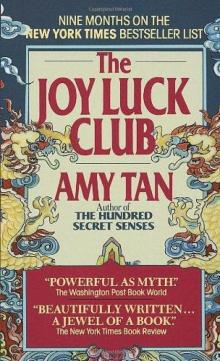 The Joy Luck Club
The Joy Luck Club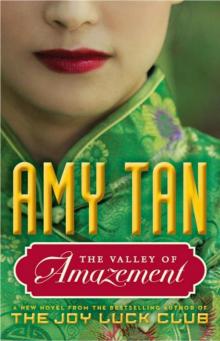 The Valley of Amazement
The Valley of Amazement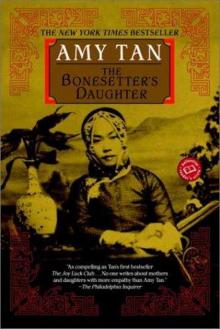 The Bonesetter's Daughter
The Bonesetter's Daughter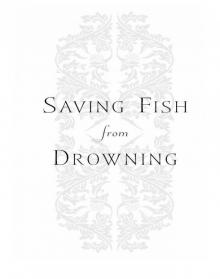 Saving Fish From Drowning
Saving Fish From Drowning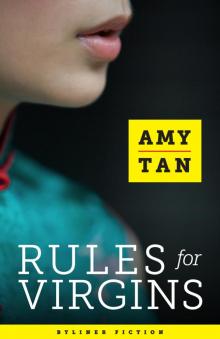 Rules for Virgins
Rules for Virgins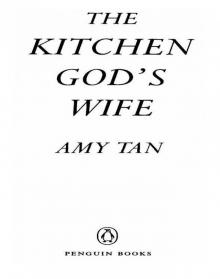 The Kitchen God's Wife
The Kitchen God's Wife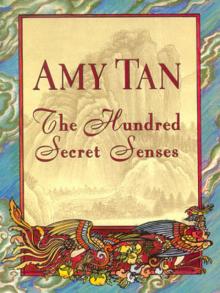 The Hundred Secret Senses
The Hundred Secret Senses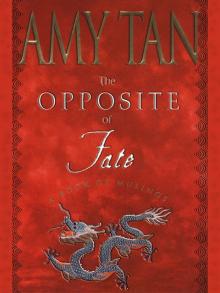 The Opposite of Fate: Memories of a Writing Life
The Opposite of Fate: Memories of a Writing Life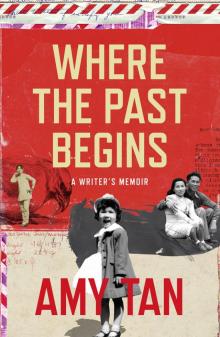 Where the Past Begins
Where the Past Begins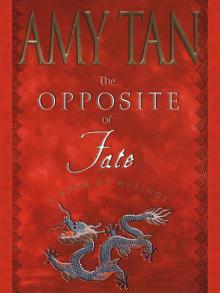 The Opposite of Fate
The Opposite of Fate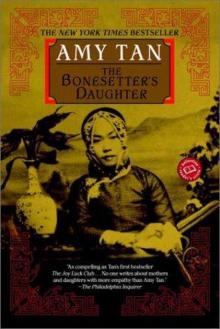 (2001) The Bonesetter's Daughter
(2001) The Bonesetter's Daughter